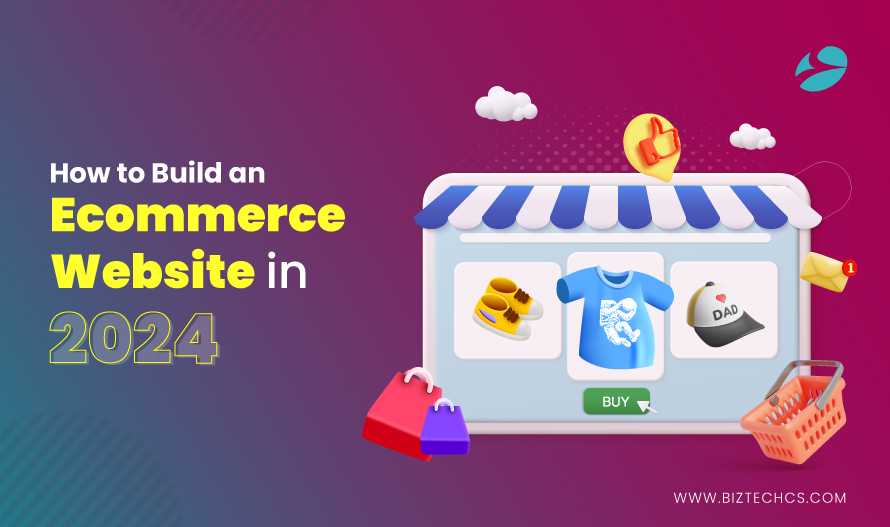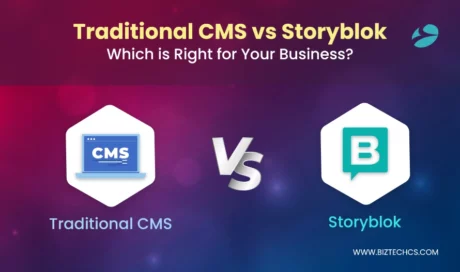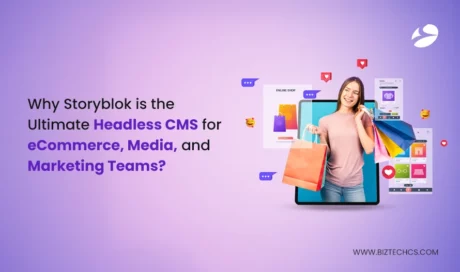2080
How to Build an Ecommerce Website in 2024? Step-by-Step Guide
28 Mar, 2024
7 min read
2080
28 Mar, 2024
7 min read
Table of content

As online shopping has slowly become the new normal for shoppers worldwide, investing in eCommerce website development appears promising for businesses. Whether you own a retail store and want to expand your business into the web territory or just have an online store to sell your products globally, eCommerce websites are the way to go.
While it may seem complicated initially, eCommerce development is a rather straightforward task if you have the right strategy and team in place. With the availability of various content management systems and website builders, the task gets easier.
You can get started yourself or avail of eCommerce website development services to build the most engaging, user-friendly, and secure eCommerce website. Regardless of the path you choose, we are here to help you get started on this journey of eCommerce web development.
But first, let’s check what you are in for!
As evident, the competition is fierce and cutthroat for eCommerce companies. Thus, if you are going for eCommerce web development, you must do it right.
With this step-by-step guide, you should be able to create a highly engaging eCommerce website.
Before we get into the nitty-gritty details of eCommerce store development, let’s explore the various types of eCommerce websites you can build.
1. Define Target Audience
Have you decided on the products/services for your store? Or, the type of eCommerce website you will build?
Then, it is time to define your target audience and target market. Define your target audience alongside their persona, preferences, spending habits, purchasing capabilities, and so on.
It will help you decide on the products, curate content as per audience, and devise marketing strategies targeting the right audience segment. Go a step further and create a digital business card to enable you to network seamlessly with customers.
2. Set Your Business Goals
Where do you want to lead your business? Are you going to sell within your country only? Or, want to sell globally?
Do you want to establish your brand as an SME or want to become a large-scale enterprise dealing in multiple areas?
You have to decide your business goals first because it will help you decide how scalable your eCommerce store has to be. Note down your goals and visions and proceed with the following steps.
3. Choose an eCommerce Platform to Build a Website
There are plenty of eCommerce platforms that helps you create eCommerce websites seamlessly. While some of the platforms don’t require coding proficiency, some of these require technical expertise to code a website.
Research and check 5 best eCommerce platforms of 2024 and decide the best one for your online store! Here, we have mentioned some of the most popular ones for your reference.
It is a PHP-based eCommerce platform that was acquired by Adobe Inc. in 2018. You can either use Magento open-source or proprietary license Adobe Commerce depending on your needs.
Extending powerful features like multi-store management, responsive store design, high scalability, customizability, and seamless 3rd-party integrations, Magento is a powerful eCommerce platform. The wide developer community further helps as you can easily seek support from fellow eCommerce website developers.
However, one thing to note is that working with Magento requires technical expertise and you may have to avail of eCommerce website development services for it.
Shopify is a proprietary eCommerce platform for online businesses and retail businesses with POS needs. The platform itself is scalable and lets you create online stores and manage them effortlessly. You have multiple customizable themes to choose from and use Shopify apps to build exclusive features for your store.
Use Shopify payments to avoid paying any additional transaction fees. You don’t have to take care of hosting with Shopify. The platform is easy-to-use and almost anyone can get started with it.
P.S.: Check our Magento vs Shopify guide for detailed comparison between the two eCommerce platforms.
WooCommerce is an open-source plugin for WordPress. So, if you are proficient with WordPress, you can easily use WooCommerce to build highly customized, scalable, and secure online store. With seamless integration capabilities, you can connect your store with Google Analytics and prepare it to perform better in search engines.
With features like multi-language and multi-currency support, WooCommerce is perfect for small to large-scale businesses requiring custom solution.
4. Pick a Theme or Customize One
First impressions are the most important ones. Thus, your customers must feel engaged and attracted to your online store right from the moment they land. You can pick a theme that resonates well with your brand image and get started. If you don’t find the available free themes captivating, you can go for a premium one or customize one to your needs.
5. Choose Hosting
While some of the eCommerce platforms like Shopify are self-hosted, others are not. Thus, depending on the eCommerce platform you choose, you may have to take care of your hosting. Get a domain name that’s unique and easy for tounge and choose a hosting plan, considering your long-term goals.
6. Build Functionalities
Deciding and building features is one of the most important step of custom eCommerce development. Choose the most essential features and get those developed for your store. Keep in mind that your store should have seamless user experience so you can retain customers.
Here, look at some of the must-have features of an eCommerce store!
7. Add Products and Content
After the website design is complete, add your products under suitable categories and add clear product descriptions. Make sure the content is readable and user-friendly.
8. Test and Launch
Test your website thoroughly. Every link and button should function as it should. Check every feature and functionality diligently before your website goes live as you don’t want customers to face poor user experience. After thorough testing of your website, launch it for everyone to use.
While the above steps should help you develop a user-frinedly eCommerce store, there are multiple nuances that you have to consider. In this list, we have curated some pre-launch points that needs your attention.
After the website is launched, keep a close eye on its perofrmance and optimize your promotion, sales, and other strategies accordingly. Having a team of experts help in this pursuit as you can easily avail of eCommerce development services and get expert assistance should there an unprecedented issue arise.
If you are also looking for a team of eCommerce professionals who can help you through all these steps and launch a store you have envisioned, team BiztechCS might be perfect for you. With our diverse project experience and rich expertise in eCommerce, we can help develop highly engaging and profitable online stores.
Developing an eCommerce store in 2024 is quite a challenge. Moreso because of the cutthroat competition we have today. Your product/ service has to be unique and so should your online store. With modern technology implementations, you have to build unique features that can captivate users and prevent them from leaving your site.
For instance, AI-powered chatbots, AR-guided product visualizations, AI-guided product recommendations, and so on. Walking through this step-by-step guide should help you build a unique and user-friendly store for your audience.

Artificial Intelligence (AI)
3570
By Devik Gondaliya
22 Apr, 2025

Storyblok
37329
By Devik Gondaliya
02 Apr, 2025

Storyblok
38243
By Devik Gondaliya
01 Apr, 2025